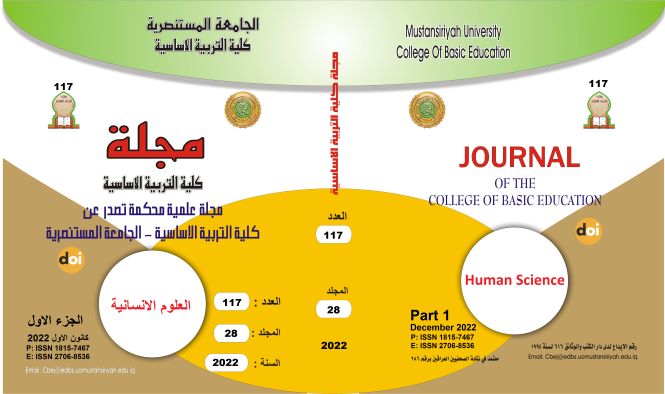The effect of the Perkins and Blythe model on developing Arabic calligraphy skills among students of the Institute of Fine Arts
Main Article Content
Abstract
The study aimed to identify the impact of the Perkins and Blythe model on developing Arabic calligraphy skills among students of the Institute of Fine Arts, To achieve the goal of the research, the researcher used a one-group experimental design with a pre- and post-test for the Diwani script to fit it on a sample of third-grade students from the Institute of Fine Arts, The research sample consisted of (27) students as an experimental group, cognitive achievement, And the skill test for Diwani calligraphy, The researcher analyzed the data into systematic images for their research using the statistical package for social sciences (spss). The most important results of the search showed the following :
- The Perkins and Blythe model helped students link new knowledge and skills with previous knowledge and skills, and this is what makes education continuous.
- Education using the Perkins and Blythe model that allows for discussion between the teacher and the learner, and gives an opportunity for the learners to express their opinions and express the experiences they have, which helps them to form their own experiences and knowledge.
Recommendations:
In light of the results and conclusions reached by the researcher, they recommend a number of recommendations, including:
- The necessity of following modern models, strategies and methods in teaching, and not relying on the usual methods, because modern models increase the mastery of male and female teachers of teaching skills, as well as they add to the lesson vitality and activity and keep the boredom away from both the teacher and the learner.
- The necessity of paying attention to the knowledge aspect in teaching Arabic calligraphy, and linking it to the skill aspect, and that this be sequential and sequential in the information that pertains to those skills.
Suggestions:
To complement and develop the current research, the researcher suggested the following:
- Conducting a balancing study between the Perkins and Blythe model, and other models, to identify their preference in teaching Arabic calligraphy skills.
- The effectiveness of the Perkins and Blythe model in artistic anatomy.
Article Details

This work is licensed under a Creative Commons Attribution-ShareAlike 4.0 International License.
